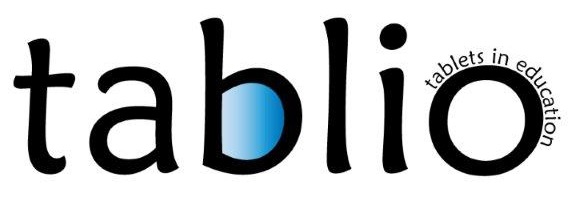Introduction

The first Teacher Design Team (TDT) has been organised at Istituto Comprensivo “Giovanni XXIII” placed in Acireale (Italy). It is a school comprehending classes from early childhood until lower secondary education. The school is composed of 8 buildings placed in different places, some of the not really close to the city centre. The school is thus working in different socio-cultural contexts.
The educational and learning offer of the school is based on the analysis of the socio-cultural contest in which the school operates in order to guarantee the wellbeing and learning success of its students. Indeed, the institute believes that the school is a community of continuous and comprehensive learning where the overall wellbeing of the student should be guaranteed. It is really active on counteracting early school leaving at different levels: material, intellectual and motivational. This is the reason why the school promotes the use of alternative teaching techniques including the use of tablet and other ICT devices.
Although the school works in different social and cultural contexts, one of the main aims of the school is to tackle early school leaving and to promote the inclusion of all its students in the learning path. In some areas in which the school operates, along with the parish community, it is the only aggregation centre: thus, it often organises afternoon activities in order to give its students a place where to express themselves and grow by developing their sense of belonging to a broader community and their active participation in their learning and personal growth.
In its work, the school tries to involve as many educational agencies as possible to value people, environment and financial resources of the central government, local authorities and European community. The aim is to involve as many actors as possible in the promotion of new educational methodologies and to tackle the early school leaving and involve as many students as possible in the learning path.
The lower secondary education classes have at their disposals tablets that have been used in these years by teachers and students to foster the inclusion of learners with special needs. The use of tablets and Apps has proven an effective methodology to foster the inclusion of these students as well as students with disability or the ones who were not enough motivated in studying.
The Teacher Design Team (TDT) work
The TDT was made up of:
- 1 teacher with a coordinating role within the school. Precisely, she is a funzione strumentale, namely teachers supporting the school leader in the organisation and monitoring of activities in given areas. In this case, the teacher involved is supporting in the activities related to the inclusion of students with disability and special learning needs.
- 2 teachers of science and mathematics.
- 1 support teacher, who is a temporary staff and is in the process of becoming a permanent teacher.
The teachers involved were working in lower secondary classes. They all have experience in working with students with disability and/or special learning needs. The majority of them (3 out of 4) have already tested the use of tablets during their lessons and would like to improve their skills in using mobile devices and Apps to create inclusive learning environments.
The group collaborated with TABLIO project and CESIE for the school year 2017-2018 (from September 2017 to June 2018.
The first meeting with the group has been focused on analysing the challenges that teachers wanted to address in their daily work in class. The starting point has been the analysis of the major difficulties they meet in their teaching and which difficulties have students in following the lesson. The reflection has been focused on Mathematics and Science as the teachers involved in the TDT are teaching these subjects.
Teachers pointed out that the first experiments of lessons with the use of tablet have been successful and students are more motivated in studying mathematics. Teachers would like to further develop the use of tablet (e.g., through new Apps) and to develop tools to evaluate progress made by student.
The group identified the following challenges:
- One of the major difficulties that students have in the field of mathematics and science is geometry. The use of tablets and Apps (e.g., GeoGebra) in class has positively impact on the students’ competences in solving geometrical problems and on their motivation in following the lesson. In particular, it has proven an effective methodology with students with special needs.
- Need to involve a student with autism during lessons and to create shared moments with the other students.
- Improving the evaluation of the results achieved with the use of tablets and ICT tools. It would be very important to keep track of students’ achievement.
Some remarks from teachers’ experience were:
- Students need alternative ways to learn mathematics because it will allow them to be more motivated and learn in an easier way
- Student with autism needs a support in learning mathematics because it will allow him to follow lessons with the other classmates
- Teachers need to develop tools that will allow them to evaluate and keep track of the progress achieved by students through the use of tablet beacuses it will allow them to further improve their work
According to the context analysis conducted by the teachers and the identified challenges, the TDT started working in class with 20 students from the 3rd year (last year) of the lower secondary school. The aims were:
- Improve students’ motivation in learning mathematics
- Actively involve the student with autism in regular lessons
- Provide 1:1 feedback to students and allow them to see their progresses
Some first ideas on how to address design challenges have been addressed and teachers came up with some possible solution for the design phase:
- To create an on-line portfolio that will allow students to upload the exercises done and their homework and receive feedbacks from teachers. The portfolio will allow teachers to evaluate the progress done by students.
- The student with autism will also have his portfolio and will participate, when possible, to the exercises done by the other students in groups with the monitoring of the support teacher.
The second meeting has been conducted almost a month after the first one and teachers during that period have been invited to think about possible solutions for the design challenges.
The main idea has been the development of an on-line portfolio to keep track of the students’ results and interact with them online.
The third meeting has been conducted a month after the second one and teachers during that period have been invited to start developing activities in class with students combining innovative existing technology on tablet and instructional approaches into new learning scenarios and accompanying learning materials.
They tested the Geogebra App with students during math and geometry lessons. Students also did exercises and evaluation test in open spaces where they have tools and instruments (e.g. the Cartesian plane) dedicated to scientific subjects, so they were able to combine applied approaches, exercises with the use of Apps and tablets.
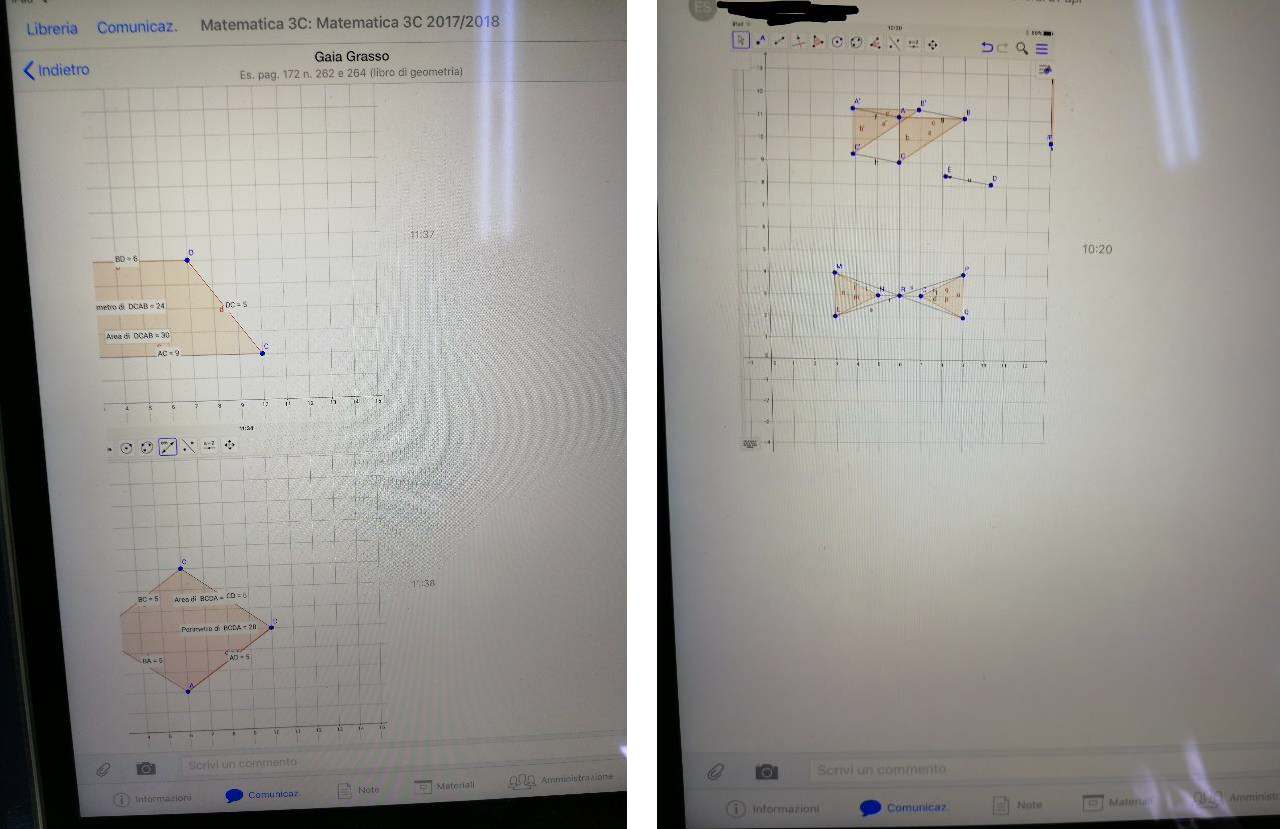
Pic. 1 – 2 Exercises with the Geogebra App
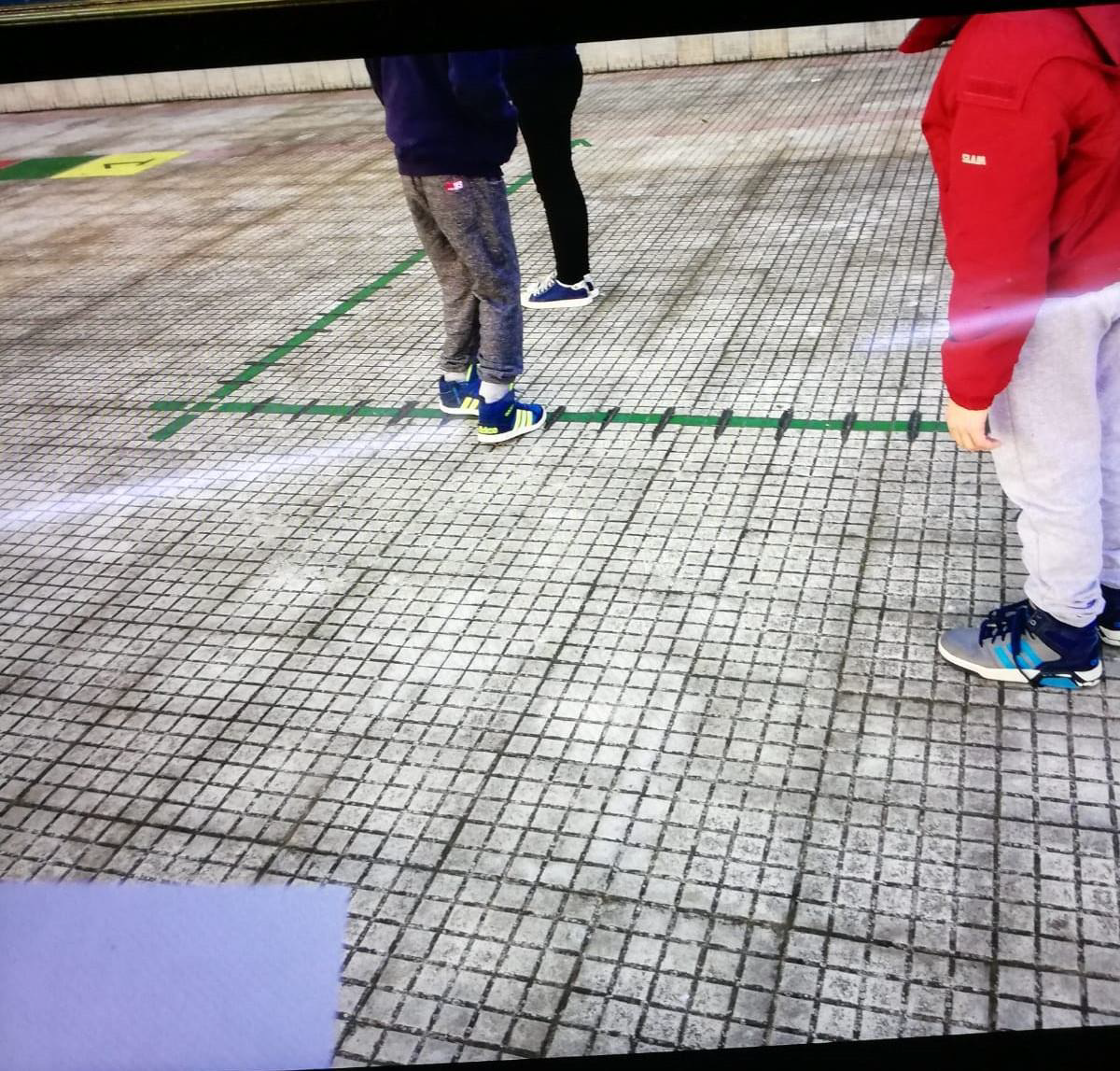
Pic. 3 Outdoor Cartesian plane exercises
By using the tablet and this App as well as others, these students got more confident with the subject and the exercises. In some cases, students with more difficulties became tutor of the others on how to use the App.
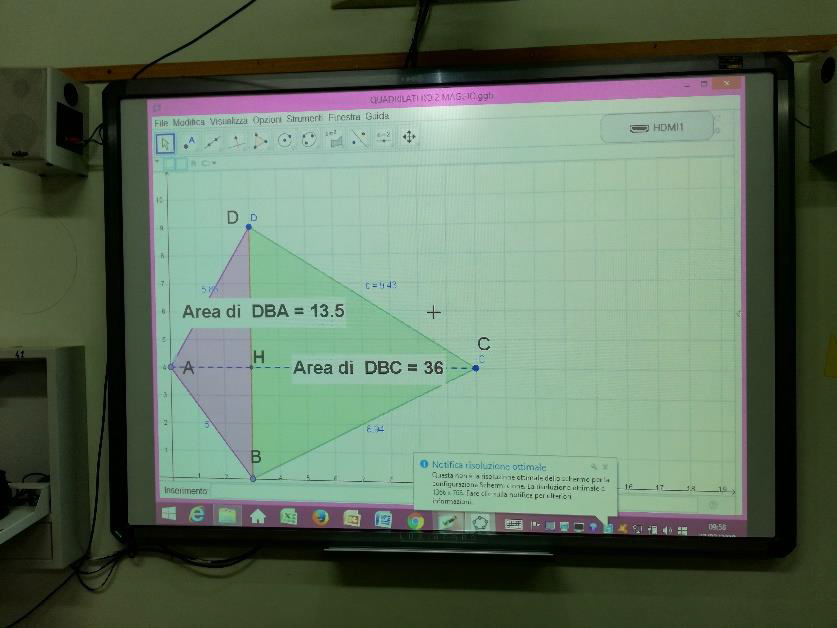
Pic. 4 Projection of the geometrical exercises in class using the LIM Interctive Whiteboard
The fourth meeting has been conducted almost a month after the third one and teachers during that period worked with students implementing the innovative learning arrangements. In particular, students have been invited to continue working with Tablets for 2 months (April-May) both in class and at home (for those who could use the connection at home) using different tools and programs.
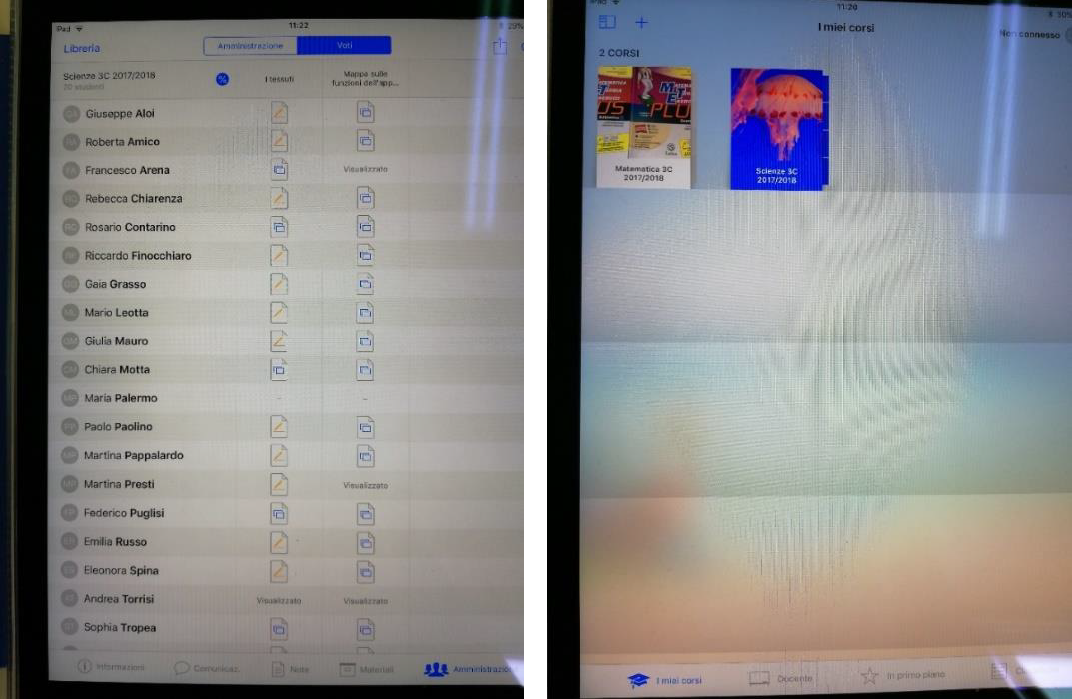
Pic. 5 Online platform for students and teachers
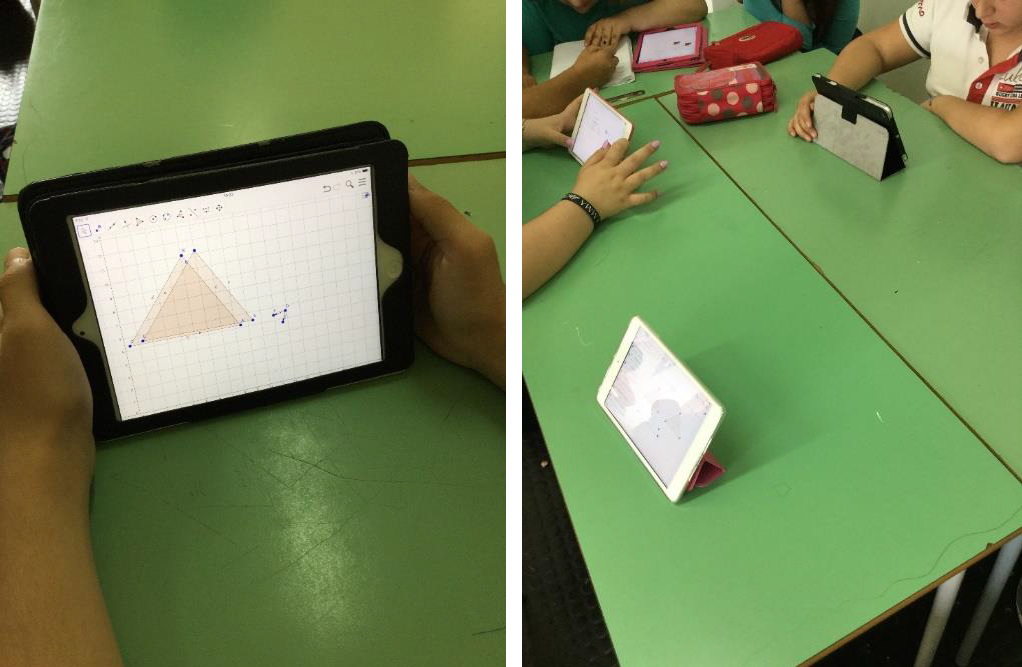
Pic. 6-7 Students working with tablets in class
The main purpose of the activities was to use iTunes U to share homework and exercises among students and with teachers.
Assigned Activities:
- To use and study Geometry through the Cartesian Plane (with “Geogebra”)
- To realize a conceptual map with Simple Minds on a specific science topic (tissue)
- To answer questions on the Nervous System (open answers)
Pupils sent the teacher (on the ITunes U platform) the exercises of sciences using the application Pages (text process). Both the exercises of geometry (realized with Geogebra) and the conceptual map made with Simple Minds were sent as images and screenshots.
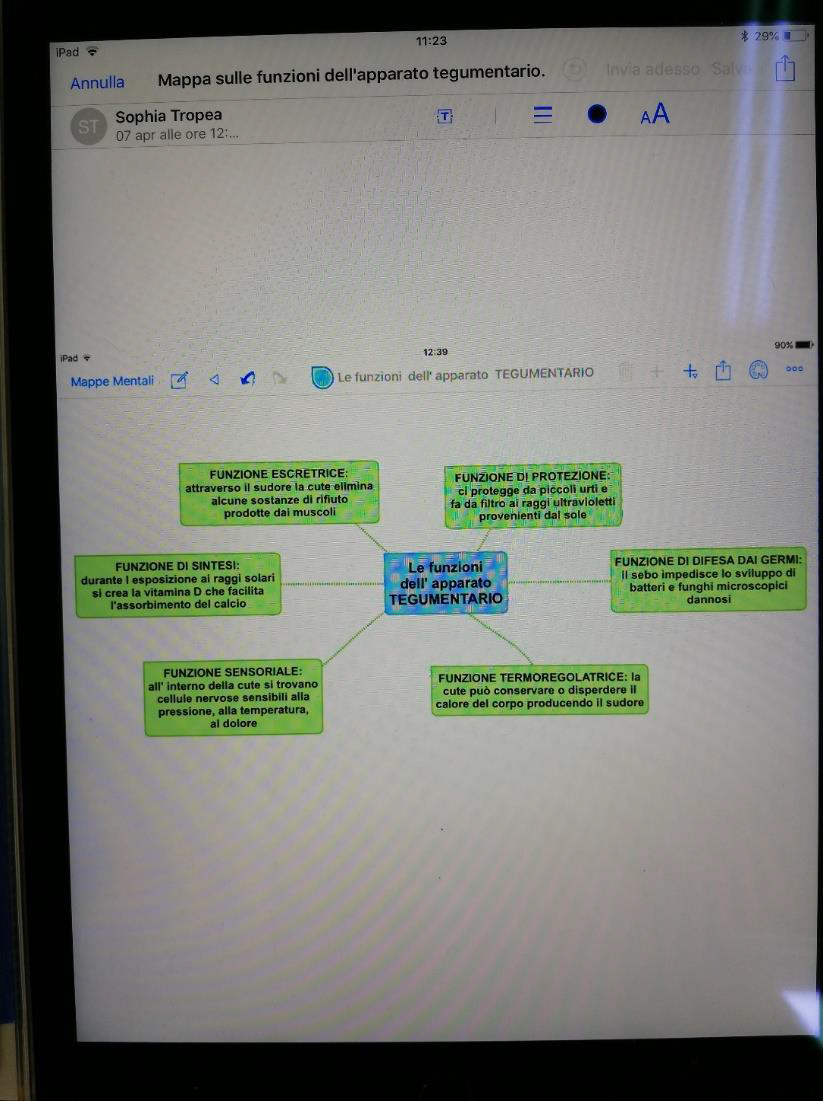
Pic. 8 Example of Conceptual Map realization using App (Simple Minds) and Digital devices
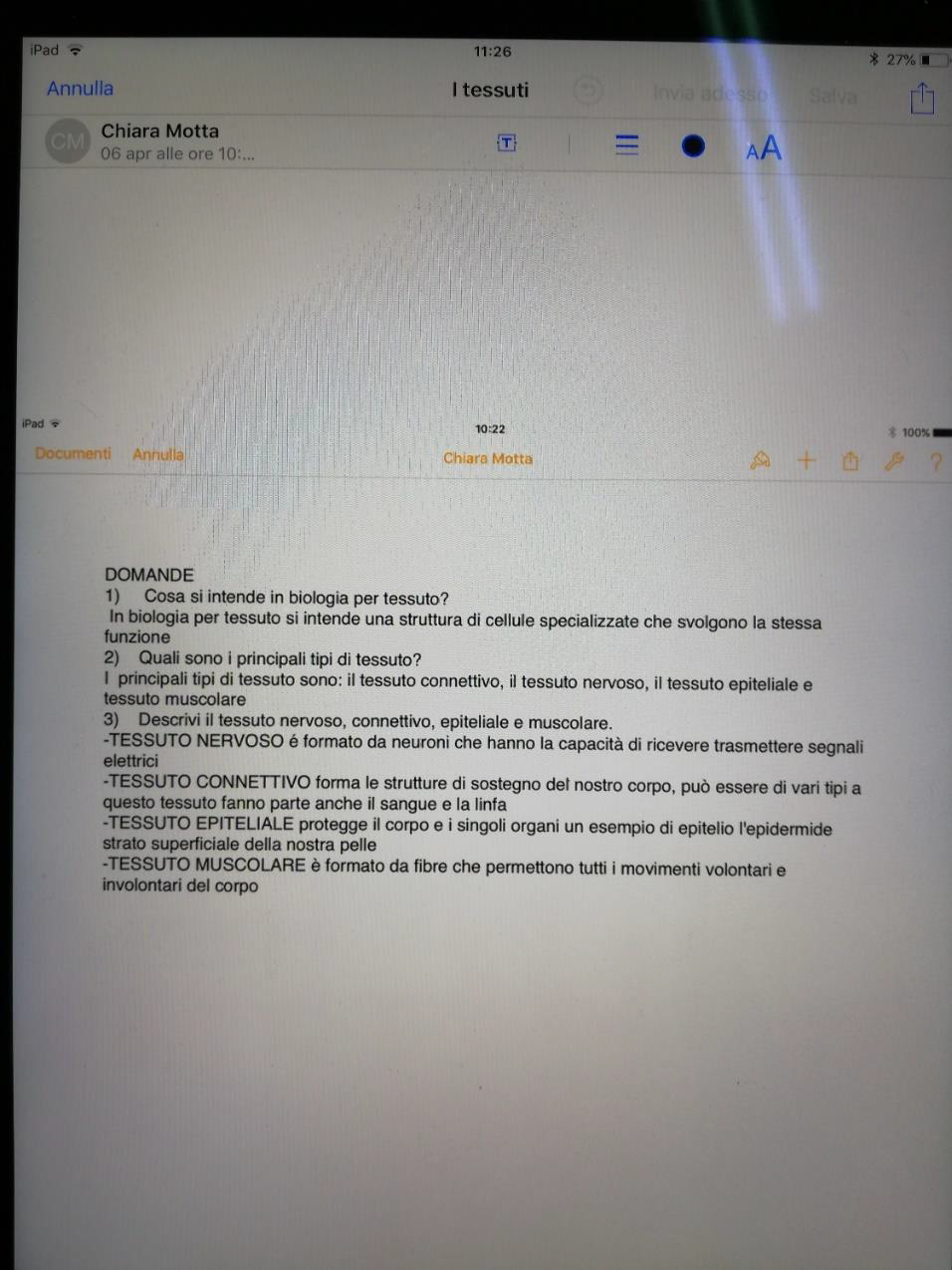
Pic. 9 Example of an online test for students
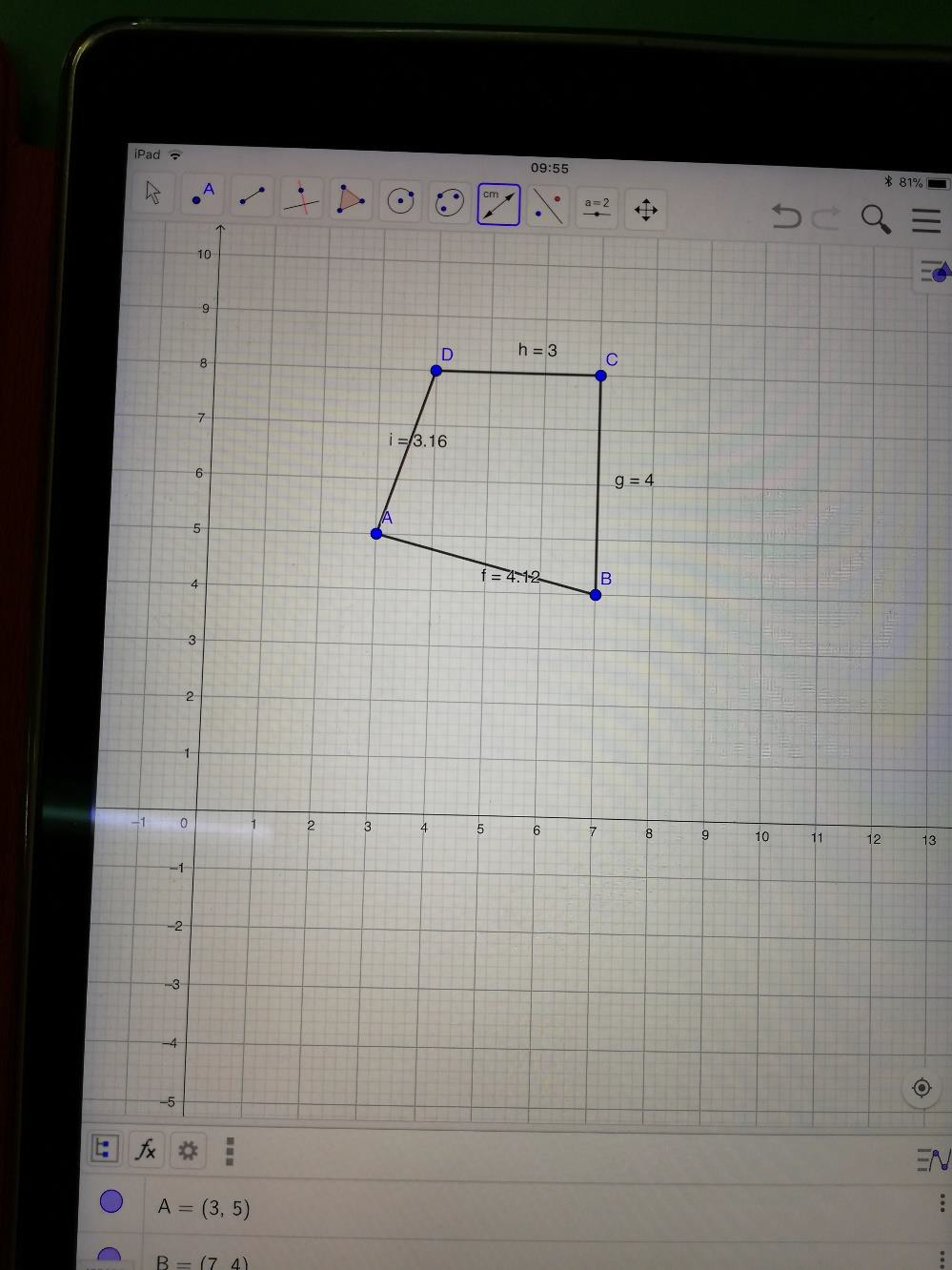
Pic. 10 Example of a Geometrical exercise using App (Geogebra) and digital platform/device
Teachers, after introducing the subject of the lesson/exercises (using the interactive whiteboard), uploaded and sent the students specific tasks, exercises and deadlines through the ITunes U virtual class. The support teacher assisted the student with autism during the implementation period (connection to the virtual class, typing and, in general, the realization of the various activities and exercises).
Methodology and group strategies
Students, included the pupil with autism, were grouped in islands of 4/5 members collaborating actively in laboratory classes. The formation of the groups depended on the kind of activities, subjects, students’ inclinations and always guaranteed cooperation and socialization among students because the groups have been mixed several times.
Timing
The virtual class has been tested from April 2018 (IPad delivery) until May 2018 (IPad return).
- Activities assigned for home had a limited time of 7 days.
- Activities assigned in class had a maximum time of two hours.
Evaluation methodology
- Individual (1-1) online revision between teacher and student
- Collective revision in class (the teacher shows all the correct exercises to the class through the interactive whiteboard).
Conclusions
The work of the TDT followed the ADDIE-method in an iterative process where Analysis, Design, Development, Implementation and Evaluation (optimisation of the design) go hand-in-hand. Each new pedagogical arrangement has been designed following the design-principles, described following the design-templates and evaluated following the evaluation-criteria. Teachers were also interviewed, documents and tools were analysed, class observations were done and video reports were made.
At the beginning of the TDT work have been set with teachers clear goals and objectives; the monitoring process covered all the implementing period (from analysis to evaluation) and at the end teachers were able to demonstrate that all the fixed objectives and expected results were reached. Indeed, the activities realized in class have been very useful for both the TDT and students.
The TDT reached the following results:
- Increased use of Tablet and Digital devices in class.
- Developed tools to evaluate progress made by students.
- Involvement of students with disabilities and/or learning difficulties in regular lessons.
- Alternative teaching and learning methodologies used in class.
- Improved students’ motivation and participation in class.
- Online portfolio/virtual classes tested and used in class (Fidenia, ITunes U).
At the end of the school year, teachers and students filled out an evaluation form, provided by the TABLIO team, in order to investigate the effect/impact of the activities as well as teachers’ and students’ satisfaction at different levels. The TDT underlines the great result of the activities in terms of differentiation and inclusion in class, especially for the student affected by autism: students with lower learning problems helps those who need particular support (peer support and tutoring among students). The student with autism show a big interest in working and studying with Tablets and a high level of participation and inclusion in class. The use of tablets in class had also a great impact on students’ motivation, inclusion and participation. They showed a great interest in studying with tablets and differentiating their learning process at school.
